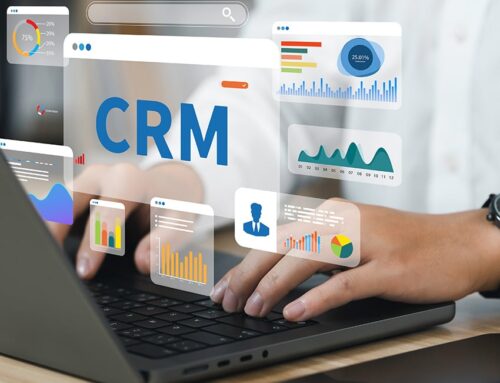What is Biddable Media?
Biddable media refers to digital advertising space purchased through real-time bidding. It’s a flexible and efficient way to ensure your ads reach the right audience. This article will cover the basics of biddable media and its benefits for your marketing strategy.
Key Takeaways
- Biddable media operates through a real-time bidding auction system where advertisers compete for ad placements, allowing precise targeting and efficient budgeting.
- Key channels of biddable media include Pay-Per-Click (PPC), social media advertising, and video marketing, each serving different advertising goals and target audiences.
- Effective biddable media campaigns require clear objectives, thorough research, continuous testing, and integration with broader marketing strategies to maximize ROI.
Understanding Biddable Media
Biddable media involves acquiring ad placements through a competitive auction process called real-time bidding. In this system, companies bid in real-time, with the highest bid winning the slot. This method enables precise and efficient ad delivery, making biddable media essential in modern marketing strategies.
While highly effective, biddable media’s complexity demands a solid grasp of auction-based purchasing and a clear understanding of the target audience. Mastering the bidding framework allows for competitive yet cost-effective ad placements. Knowing your audience ensures ads reach those most likely to engage. Additionally, creative tactics enhance targeting precision, which is essential to campaign success.
The Auction System Explained
In the dynamic realm of biddable media auctions, advertisers compete for ad spots by submitting bids. The system operates on a straightforward principle: the highest bidder wins the ad space. Costs fluctuate based on demand, with prime ad spots often attracting premium prices.
Advertisers may raise their bids on high-performing ads to increase visibility and reach potential customers. This flexible approach allows quick adjustments based on results, making it an effective strategy for managing budgets and optimizing ad performance.
Key Biddable Media Channels
Biddable media encompasses various channels, each designed to meet different advertising goals and target audiences. These channels include paid search, display advertising, and sponsored social media content, all of which offer unique features that can enhance campaign effectiveness. Understanding the specifics of each channel is crucial for optimizing your biddable media strategy and achieving the best possible results.
The pricing of ad space in these channels is influenced by factors such as demand and competition among advertisers. It’s worthwhile to explore some key biddable media channels to gain a better understanding of their unique benefits.
Pay-Per-Click (PPC) Ads
In the realm of paid marketing, Pay-Per-Click (PPC) stands out as a highly effective strategy where advertisers engage in a bidding contest for premium spots within search results based on specific keywords. These PPC ads are prominently displayed on various search platforms and are typically marked with an ‘AD’ designation. Selecting highly relevant keywords is essential for improving both effectiveness and cost-efficiency in PPC campaigns, as poor keyword choices can lead to high expenses with low returns.
By carefully choosing their keywords and strategically bidding on ad space, businesses can increase their visibility at the top of Search Engine Results Pages (SERPs). This approach ultimately drives online traffic and boosts conversion rates, making PPC an invaluable tool in the digital marketing landscape.
Social Media Advertising
Social media platforms provide precise audience targeting based on demographics and user behavior, allowing advertisers to tailor ads according to interests, location, age, and more. This capability makes social media advertising highly effective. For instance, LinkedIn enables targeting by job title, location, and specific interests.
Biddable ads on social media typically use creative imagery or video to capture attention, often paired with punchy copy and a strong call to action. Video marketing, in particular, is a powerful addition to social media ads, driving engagement and enhancing brand visibility.
Video Marketing
Video marketing is a vital component of biddable media, especially on platforms like YouTube, which operates on a cost-per-view system. Advertisers pay only when viewers engage with the video for a specified time. Costs vary based on platform popularity and specific search terms.
This approach enables companies to craft engaging content for their target audience, boosting engagement and conversion rates. Video marketing stands out due to its powerful ability to grab attention and communicate messages effectively and impactfully.
Benefits of Biddable Media
Incorporating biddable media into a marketing strategy offers advantages such as precise targeting based on demographic and interest data. This level of targeting improves website visits and conversion rates.
Scalability is another key advantage of using biddable media. When businesses identify successful strategies, they can easily scale their advertising efforts to increase reach while maintaining positive results. Additionally, the real-time nature of bidding allows companies to make swift adjustments based on current performance metrics, optimizing efficiency and improving return on investment (ROI).
Common Pitfalls to Avoid
Using paid ads can deliver significant rewards, but it’s essential to avoid common pitfalls that can undermine their effectiveness. Failing to align your biddable media with your overall marketing strategy can lead to wasted resources and inconsistent messaging. Targeting an audience that is too broad or too narrow can also waste your ad budget, ultimately reducing campaign effectiveness.
Inadvertently directing organic traffic toward paid ads may incur unnecessary high costs without corresponding gains. It is critical to attract qualified leads for maintaining robust conversion rates rather than falling into the trap of drawing an irrelevant audience which could compromise the efficiency of your advertising efforts.
Steps to Implement Biddable Media in Your Digital Marketing Strategy
Incorporating biddable media into your digital marketing approach requires strategic foresight and meticulous implementation. Initiate this by setting a precise goal in harmony with the overarching aims of your overall marketing strategy. This clarity serves to hone your campaigns for targeted impact, enabling quantifiable progress toward predetermined targets.
Crafting a successful biddable media strategy entails thorough investigation, strategizing, experimentation, monitoring, evaluation, and continual refinement. It is imperative to consistently test and scrutinize advertisements in order to refine the effectiveness of your campaigns while also making certain that the allocation of your biddable media budget is maximized for efficiency.
Define Your Objectives
In the initial phase of employing biddable media, establishing clear and specific goals is essential. These objectives should align with your overall marketing strategy and include measurable metrics, ensuring you focus on achieving defined targets. Understanding your target audience is also crucial; this insight helps avoid casting too wide or too narrow a net in your advertising efforts. During implementation:
- Formulate explicit objectives that are consistent with your overarching marketing approach.
- Ensure that these objectives have measurable indicators to guide you toward tangible achievements.
- Understand the characteristics of your target audience to prevent overly broad or overly limited promotional strategies.
Establishing clear goals serves as a roadmap for all aspects of campaign management, from selecting keywords to determining ad placement. This strategic clarity enhances both the efficiency and effectiveness of campaigns, ultimately maximizing the return on investment (ROI) for every dollar spent on advertising.
Conduct Thorough Research
Conducting extensive research is essential for the success of any biddable media strategy. This foundational step ensures your ads reach the appropriate target audience, optimizing your Pay-Per-Click (PPC) investment and boosting your return on investment (ROI). Pinpointing what drives and matters to your potential customers is key to crafting impactful messages that effectively engage them.
Adopting a strategic approach by meticulously choosing keywords has been recognized as an effective tactic for maintaining low advertising costs while enhancing campaign results. Engaging in this level of research assists in creating a story that connects with potential customers, making certain that the ads presented are not only pertinent but also captivating.
Continuous Testing and Optimization
The essence of a robust biddable media strategy lies in persistent testing and optimization. By frequently evaluating ad performance, swift modifications can be made to enhance campaign effectiveness. Real-time feedback empowers marketers to make informed decisions and adjust their strategies as needed.
This repetitive approach ensures that your campaigns consistently operate at peak efficiency, fostering conversions and driving business growth. Through ongoing examination and improvement of your ad content, you maintain a competitive edge while achieving your marketing objectives.
Choosing the Right Biddable Media Management Approach
Choosing the right management model for biddable media is essential to enhance campaign effectiveness. Considerations such as budget size, available internal resources, and overarching marketing strategy are critical in guiding this choice. A successful approach requires a blend of skilled human input and suitable technological tools.
There are several options for managing these campaigns, including building in-house teams, hiring independent contractors, or partnering with multi-specialist agencies. Each option comes with its own set of advantages and disadvantages; for example, in-house teams offer reliable resource allocation, while multi-specialist agencies bring diverse expertise and fresh perspectives.
By carefully considering these options, you can make an informed decision that ensures efficient campaign management and helps achieve your targeted outcomes effectively.
How Biddable Media Complements Other Marketing Strategies
Biddable media enhances campaign effectiveness when integrated with a broader marketing strategy, including sustainable inbound techniques. Aligning your paid initiatives with the overall marketing plan ensures consistency and supports the achievement of business objectives.
Paid marketing plays a crucial role in bolstering campaign success and fostering growth within your business. By integrating biddable media with various strategic methods, you can create a unified promotional approach that amplifies influence and optimizes return on investment (ROI).
Best Practices for Effective Biddable Media Campaigns
To manage biddable media effectively, it’s imperative to devise a strategy customized for your organization. A one-size-fits-all approach does not work in this space. Success hinges on integrating experience, creativity, and a deep understanding of your target audience within your biddable media strategy. Monitoring performance through precise data tracking and analysis is vital for making well-informed strategic choices.
To ensure that biddable media campaigns meet their objectives, implement best practices such as aligning with organizational goals, providing strategic guidance based on insights gathered from campaign management experiences, and thorough reporting of data. Adhering to these principles can help fine-tune your efforts toward optimizing campaign effectiveness.
Summary
In conclusion, biddable media is a potent tool that can significantly enhance your digital marketing strategy when leveraged effectively. It provides precise targeting, scalability, and measurable outcomes, making it an essential element of any marketing campaign. By grasping how biddable media operates, selecting the right channels, and following best practices, you can optimize your ROI and foster business growth.
As you begin your journey with biddable media, it’s crucial to set clear objectives, conduct comprehensive research, and continually test and refine your campaigns. With the right approach, biddable media can strengthen your overall marketing efforts and help you reach your marketing objectives.











